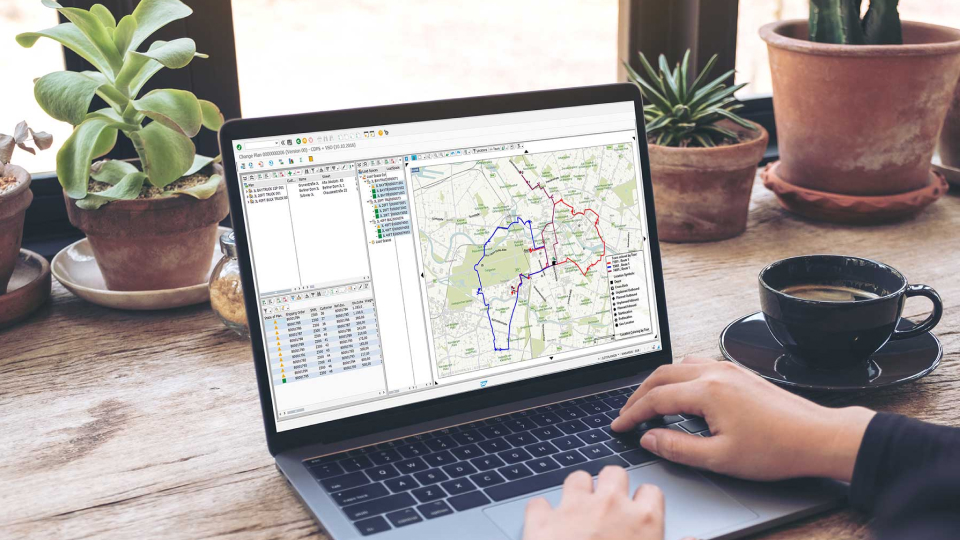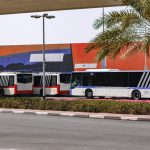
How Transit Planning Software Helps Reduce Fuel Costs?
In an industry where every mile matters, fuel costs can quickly become one of the most significant expenses for transit operators. With fluctuating fuel prices and increasing pressure to operate sustainably, transportation companies are constantly seeking smarter ways to cut down on unnecessary fuel consumption. Surprisingly, one of the most effective solutions isn’t found under the hood—but in the planning process. Transit planning software has emerged as a powerful tool that helps transit agencies and fleet operators make data-driven decisions to optimize routes, reduce idle time, and eliminate inefficient trips.
By using advanced algorithms and real-time data, this software can dramatically lower fuel usage without compromising service quality. In this blog, we’ll explore how public transportation management software contributes to fuel cost reduction and why it’s becoming a must-have in modern fleet management.

The Fuel Cost Challenge in Transit Operations
Fuel is one of the largest recurring expenses in any transportation operation—often accounting for up to 30–40% of total operating costs. As fleets grow and service demand increases, so does fuel consumption. Unfortunately, many transit systems still rely on outdated scheduling methods or static route plans. These static route plans fail to adapt to real-time conditions, leading to unnecessary mileage, idle time, and inefficient vehicle usage.
Common issues include:
A. Poor route planning: Without optimized routes, vehicles take longer paths or encounter regular traffic bottlenecks, leading to excessive fuel burn.
B. Unbalanced demand distribution: Sending large vehicles on low-demand routes wastes both space and fuel.
C. Excessive idling: Long wait times at terminals or delays caused by poorly coordinated schedules significantly increase fuel use.
D. Lack of trip consolidation: Operating multiple underutilized vehicles instead of consolidating demand into fewer trips adds to the fuel burden.
Rising fuel prices only magnify these challenges, forcing transit agencies and private operators to look for scalable solutions that don’t compromise service quality. Moreover, with growing attention to environmental sustainability, cutting fuel consumption has become a dual goal—cost reduction and lowering carbon emissions.

Transit operations today demand precision and flexibility—something that manual planning or spreadsheets simply can’t provide at scale. That’s where modern transit planning software comes in. What is transit planning? It is an advanced system that empowers operators to turn fuel-saving strategies from a guessing game into a data-driven, automated process.
What is a Transit Software?
Advanced transit planning software is a digital solution designed to help transportation providers plan, schedule, and manage their routes, vehicles, and resources more efficiently. It uses algorithms, GPS data, and real-time traffic information to create optimized transit schedules that align with passenger demand and operational constraints.
Whether you’re managing a public bus network, a private shuttle service, or a school transport system, this software streamlines complex decision-making—like route sequencing, driver assignments, vehicle capacity planning, and service frequency.

Modern transit planning tools enable a seamless flow of data across operations by integrating with :
A. Dispatch systems
B. Fleet tracking
C. Passenger information
The result? Fewer delays, better resource utilization, and significantly lower fuel consumption. As transit agencies aim to improve both cost efficiency and service quality, transportation planning software plays a crucial role in transforming traditional operations into smart, data-driven systems.
Key Ways Public Transportation Software Reduces Fuel Costs
An AI-driven public transportation software system helps organizations reduce fuel costs by addressing inefficiencies at every level of fleet operations. Here are the core ways it contributes:
1. Route Optimization
Using real-time traffic data and historical trends, the software identifies the most efficient routes for every trip. It avoids traffic-prone areas, road closures, and unnecessary detours—reducing mileage and fuel wastage. Over time, even small route improvements can lead to significant savings.

2. Dynamic Scheduling
Traditional fixed schedules often result in empty or underutilized vehicles burning fuel unnecessarily. Transit planning software adapts service frequency and vehicle assignments based on real-time demand, ensuring that only the necessary number of vehicles are in use.
3. Reduced Idle Time
Idling is a major source of fuel loss, especially when vehicles wait at depots, intersections, or congested areas. Smart scheduling reduces idle periods by ensuring vehicles are dispatched at optimal intervals and avoid unnecessary waiting.
4. Real-Time Re-Routing
Conditions on the road can change quickly. With GPS integration and live traffic feeds, transit planning software can dynamically re-route vehicles in real time, helping them avoid traffic jams or accidents that would otherwise increase fuel consumption.
5. Optimized Vehicle Utilization
The transit planning software ensures that vehicles with the right capacity are assigned to routes based on projected ridership or cargo. This reduces the need for excess trips and avoids running large vehicles when smaller ones would suffice.
By combining automation, data analysis, and real-time responsiveness, transit planning software offers a reliable and scalable way to control fuel costs while improving overall service quality.

Additional Benefits
Beyond fuel savings, transportation planning software brings a range of operational advantages. It reduces vehicle wear and tear by minimizing unnecessary trips, leading to lower maintenance costs and longer fleet life. Improved route accuracy and scheduling enhance driver satisfaction and reduce stress. For passengers, the benefits include more reliable service, shorter wait times, and better real-time updates. Additionally, by lowering fuel consumption, operators also reduce their environmental footprint—aligning with sustainability goals and improving public perception. Overall, it’s a win-win for efficiency, cost-effectiveness, and customer experience.

Get Started with Public Transport Management Software
Implementing transportation planning software begins with understanding your operational needs. Start by evaluating your current challenges—whether it’s rising fuel costs, inefficient routes, underutilized vehicles, or service delays. Once you’ve identified your pain points, look for a solution that offers features like route optimization, real-time traffic integration, dynamic scheduling, and fleet analytics.
Choose software that supports integration with your existing systems—such as GPS trackers, dispatch platforms, or fuel monitoring tools—to ensure a seamless transition. Cloud-based solutions offer greater flexibility and scalability, especially for growing fleets or multi-location operations.
It’s also essential to involve your operations and driver teams early in the process. Their input can guide software configuration and help ensure smooth adoption. Many providers offer onboarding support, training, and customizable features tailored to specific fleet sizes or transit types (public, school, shuttle, etc.)
Consider starting with a pilot program on a small route or fleet segment. This allows you to measure impact—like fuel savings, improved punctuality, and customer feedback—before scaling system-wide.
By choosing the right transit platform and implementation strategy, you can turn transit planning software into a strategic asset that cuts costs and enhances service efficiency.




